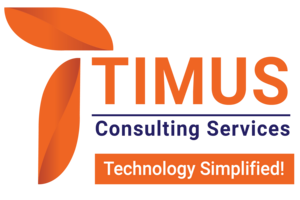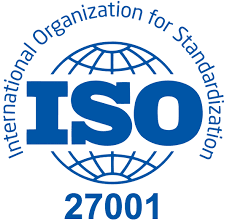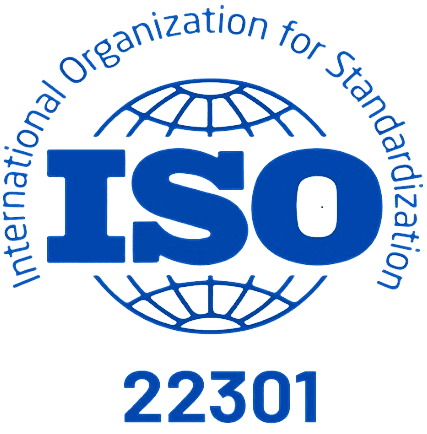In today’s ever-evolving digital landscape, organizations are continually confronted with new risks and challenges. Governance, Risk, and Compliance (GRC) frameworks are essential to maintaining organizational integrity, safeguarding assets, and ensuring regulatory compliance. The advent of Artificial Intelligence (AI) has brought about transformative changes in how organizations approach risk management, providing new tools and techniques to enhance GRC strategies.
Understanding GRC and Its Importance
Governance, Risk, and Compliance (GRC) refers to the integrated collection of capabilities that enable an organization to achieve its objectives reliably, address uncertainty, and act with integrity. It encompasses three primary components:
- Governance: The framework of policies, procedures, and practices that ensure the organization’s actions align with its goals, values, and regulatory requirements.
- Risk Management: The identification, assessment, and mitigation of risks that could impact the organization’s ability to achieve its objectives.
- Compliance: Adherence to laws, regulations, standards, and internal policies that govern the organization’s operations.
Effective GRC practices are crucial for organizations to navigate complex regulatory environments, protect their reputation, and make informed decisions.
The Role of AI in GRC
AI has emerged as a game-changer in the field of GRC, offering innovative solutions to traditional challenges. AI-powered risk management leverages advanced algorithms, machine learning, and data analytics to enhance the organization’s ability to identify, assess, and mitigate risks. Here are some key ways AI is transforming GRC:
Predictive Analytics and Risk Forecasting
AI-powered predictive analytics can analyze vast amounts of data to identify patterns and trends that may indicate potential risks. By leveraging historical data and real-time information, AI algorithms can forecast future risks and provide early warnings, allowing organizations to take proactive measures to mitigate them. This predictive capability is particularly valuable in dynamic environments where risks are constantly evolving.
Automated Compliance Monitoring
Compliance monitoring is a critical aspect of GRC, ensuring that organizations adhere to regulatory requirements and internal policies. AI can automate compliance monitoring by continuously analyzing data from various sources, such as transactions, communications, and operational activities. This automation reduces the burden on compliance teams, enhances accuracy, and enables real-time detection of non-compliance issues.
Enhanced Fraud Detection
Fraud poses significant risks to organizations, both financially and reputationally. AI-powered fraud detection systems can analyze transactional data, user behavior, and patterns to identify anomalies and suspicious activities. Machine learning algorithms can learn from historical fraud cases to improve detection accuracy over time. By identifying potential fraud early, organizations can take swift action to prevent further damage.
Risk Assessment and Prioritization
AI can streamline the risk assessment process by analyzing data from multiple sources and providing a comprehensive view of the organization’s risk landscape. AI algorithms can assess the likelihood and impact of various risks, allowing organizations to prioritize their mitigation efforts. This data-driven approach ensures that resources are allocated effectively to address the most critical risks.
Real-Time Threat Intelligence
Cybersecurity threats are a growing concern for organizations across industries. AI-powered threat intelligence platforms can analyze vast amounts of data from diverse sources, including threat feeds, network logs, and social media. These platforms can identify emerging threats, provide real-time alerts, and recommend actionable steps to mitigate risks. By staying ahead of cyber threats, organizations can protect their sensitive information and maintain business continuity.
Natural Language Processing (NLP) for Policy Analysis
AI-driven Natural Language Processing (NLP) capabilities can analyze and interpret complex regulatory texts and policies. This technology can help organizations understand the implications of new regulations, assess compliance requirements, and identify gaps in their existing policies. NLP can also automate the process of drafting and updating policies, ensuring that they remain aligned with regulatory changes.
Improved Decision-Making
AI provides decision-makers with valuable insights and actionable information, enabling them to make informed and data-driven decisions. By analyzing data from various sources, AI can uncover hidden correlations and trends that may not be apparent through traditional analysis. This enhanced decision-making capability empowers organizations to respond more effectively to risks and opportunities.
Implementing AI-Powered Risk Management
While the benefits of AI in GRC are clear, implementing AI-powered risk management requires careful planning and consideration. Here are some key steps for successful implementation:
Define Objectives and Scope
Begin by defining the objectives and scope of the AI-powered risk management initiative. Identify the specific areas within GRC where AI can add value and set clear goals for the project.
Data Collection and Preparation
Data is the foundation of AI-powered risk management. Collect and prepare relevant data from various sources, ensuring that it is accurate, complete, and up-to-date. Data quality is critical to the success of AI algorithms.
Select the Right AI Tools
Choose AI tools and technologies that align with your organization’s needs and capabilities. Consider factors such as ease of integration, scalability, and vendor support. Collaborate with AI experts and vendors to ensure a smooth implementation process.
Pilot and Test
Start with a pilot project to test the AI-powered risk management solution in a controlled environment. Monitor its performance, gather feedback, and make necessary adjustments before scaling up to full implementation.
Training and Change Management
Provide training to employees and stakeholders to ensure they understand how to use AI tools effectively. Implement change management strategies to address any resistance to new technologies and promote a culture of innovation.
Continuous Monitoring and Improvement
AI-powered risk management is an ongoing process. Continuously monitor the performance of AI algorithms, gather feedback, and make improvements as needed. Stay updated on advancements in AI technology and regulatory changes to ensure your risk management practices remain relevant.
Conclusion
AI-powered risk management is revolutionizing the field of Governance, Risk, and Compliance (GRC). By leveraging advanced algorithms, predictive analytics, and real-time monitoring, organizations can enhance their ability to identify, assess, and mitigate risks. The integration of AI into GRC practices not only improves efficiency and accuracy but also empowers decision-makers with valuable insights for informed decision-making. As AI technology continues to evolve, organizations that embrace AI-powered risk management will be better equipped to navigate the complexities of the modern business landscape and achieve long-term success.
About us
We are Timus Consulting Services, a fast-growing, premium Governance, Risk, and compliance (GRC) consulting firm, with a specialization in the GRC implementation, customization, and support.
Our team has consolidated experience of more than 15 years working with financial majors across the globe. Our team is comprised of experienced GRC and technology professionals that have an average of 10 years of experience. Our services include:
- GRC implementation, enhancement, customization, Development / Delivery
- GRC Training
- GRC maintenance, and Support
- GRC staff augmentation
Our team
Our team (consultants in their previous roles) have worked on some of the major OpenPages projects for fortune 500 clients across the globe. Over the past year, we have experienced rapid growth and as of now we have a team of 15+ experienced and fully certified OpenPages consultants, OpenPages QA and OpenPages lead/architects at all experience levels.
Our key strengths:
Our expertise lies in covering the length and breadth of the IBM OpenPages GRC platform. We specialize in:
- Expert business consulting in GRC domain including use cases like Operational Risk Management, Internal Audit Management, Third party risk management, IT Governance amongst others
- OpenPages GRC platform customization and third-party integration
- Building custom business solutions on OpenPages GRC platform
Connect with us:
Feel free to reach out to us for any of your GRC requirements.
Email: Business@timusconsulting.com
Phone: +91 9665833224
WhatsApp: +44 7424222412
Website: www.Timusconsulting.com





